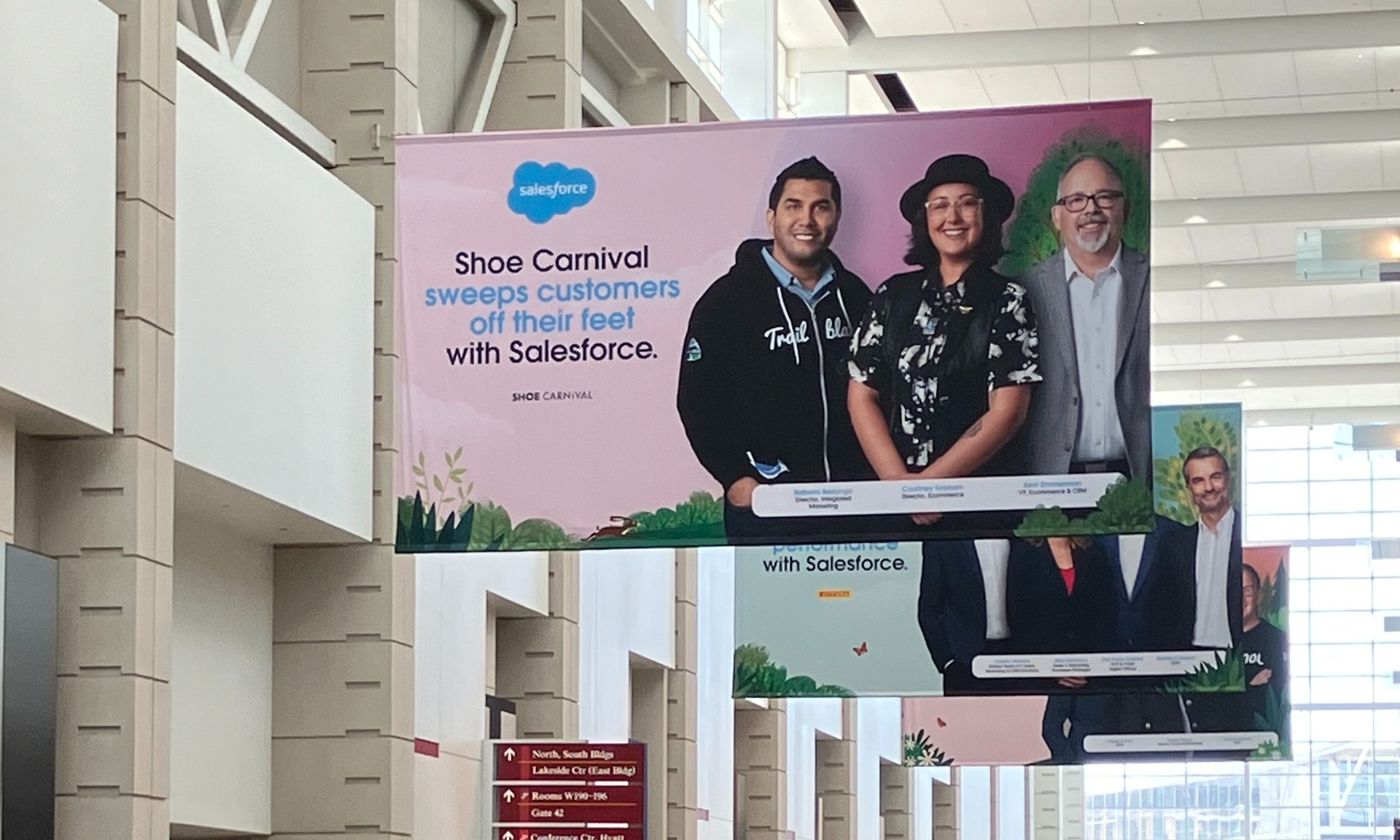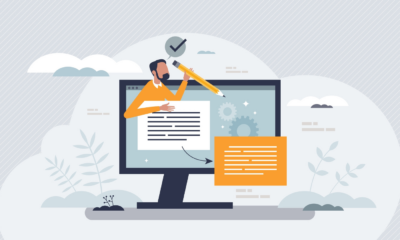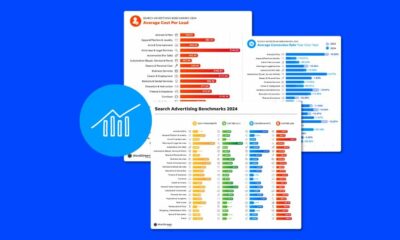MARKETING
Trends to Follow in 2022

Organizations are being forced to rethink their operation since technology is changing the way we work at an exponential rate. Today, most companies are streamlining processes by using AI and cognitive technologies to create an efficient workforce and achieve human-machine collaboration. In the aftermath of the COVID pandemic, companies are looking at a hybrid work model that combines remote work with the time spent at the office.
Given below are the 11 trends that will shape workforce dynamics in the year 2022.
AI Augmented Workforce
AI augmentation will add value to businesses since an augmented workforce is the perfect fusion between humans and machines. It requires redefining fundamental human skills and building competencies through continuous training.
It involves rethinking the role of the workers and creating a human-centric symbiotic system in order to make a smooth transition from automation to collaboration between humans and machines. Statistics reveal that a large percentage of the companies have successfully adopted cognitive and AI technologies within their workforce without the employees having to undergo excessive training.
More Focus on Skills
65% of the repeatable managerial tasks such as scheduling, approving expense reports, providing performance feedback, and monitoring direct reports will be automated by the year 2025. This shift will require companies to empower managers with a new set of skills to equip them so that they can manage the complexity of a hybrid workforce.
Organizations can either choose to decrease the number of managers or redefine the roles of the managers so that they can manage the employees’ perception of their career trajectories. Once the managerial tasks are automated, there is more scope for managers to develop the skills needed to build a better relationship with their employees.
Employee Monitoring and Analytics
Organizations will be using digital tools to monitor employees in real-time. Many applications already provide real-time activity tracking. These applications can take screenshots of the computers of the employees at regular intervals. They can also capture the action of the keys struck on a keyboard in order to monitor the employees.
Sometimes these tracking tools are installed covertly. Companies insist that some amount of monitoring is necessary to improve productivity. Moreover, analytics applications can provide insights on the performance of employees, identify talent and indicate areas where the employees might need additional support.
Although companies will continue to believe that monitoring is essential, employees may feel that they have a right to protect their privacy.
Hybrid Work with Minor Tweaks
Some companies will continue with a hybrid work model where employees have the option of working in the physical workplace and also remotely. This will help the employees work better since they can choose to work during the part of the day when they are most productive. It will also make the employees happier and help the organization attract better talent.
Companies will benefit from the reduced need for office space. Moreover, this work model will help to build the brand image of the company since prospective employees will view companies offering the hybrid work model favorably.
For the hybrid work model to be effective, companies will have to be more inclusive of people who work remotely rather than favor those who are more often at the office. Collaboration between remote and in-house teams is also a must. Again, some people may have to be present at the office more often, so being fair to people who often cannot work remotely is a must.
Virtual Meetings Will Get Better and Shorter
Virtual meetings will be held only when necessary since managers can use video-sharing platforms to make videos in order to communicate with their teams. A video sent before the meetings covering the objectives, agenda, and context can make the virtual meeting shorter and save time.
Video conferencing platforms also provide automated transcripts which seem to work reasonably well. A video library that allows the employees to hear the recorded meeting at their convenience will also help reduce the need for frequent virtual meetings.
Time is More Important than Place
Avoiding the commute to the workplace when it seems unnecessary is going to be one of the best benefits of remote work. Fewer workplace meetings and reduced distractions at the office will be a blessing for some people since not everybody has the same amount of time at their disposal.
Managing time well will have a huge impact on the life of the employees since they can develop additional skills that have become necessary as a result of companies adopting AI technologies. This in turn will improve their performance and help them make a smooth transition from automation to collaboration between humans and machines.
Metaverse
The network of 3D virtual worlds focused on social connection will continue to revolutionize all aspects of business by allowing collaboration in virtual spaces and augmented physical places. Businesses can travel between spaces and synchronize customer data across platforms.
Metaverse will continue to create new lines of virtual business and transform interactions between clients and companies. Users can host numerous virtual worlds and reshape how people work and interact. This will help companies boost efficiency and facilitate taking real-time decisions across supply chains.
Flexible Work Will Be a Requisite
Flexible work arrangements will have to be maintained by many employees out of necessity and also because several employees will continue to choose remote work. Shorter working hours rather than a pay hike to work longer will appeal more to the employees.
Companies will also have to make arrangements to provide employees with flexible reimbursements to make at least part-time remote work permanent. Employees will have to be given an allowance to purchase workplace equipment like the laptop and the ergonomic chair.
They will also have to pay for internet expenses, meal delivery during work hours and meet other foreseeable work-related expenses, so they will have to be guided on how to make these purchases and apply for reimbursements.
Bigger Role of Cybersecurity
Phishing, spoofing attacks and fake alerts have to be tackled effectively since people have started working from home. Prior to people working from home, the IT team at the workplace used to take care of cybersecurity, but when employees started working remotely from different locations during the COVID pandemic, they had to initially handle cybersecurity threats themselves.
In the year 2022, companies will have to establish and enforce a strict data security policy to prevent internal security breaches by clearly outlining security protocols that the employees have to comply with and stating the consequences of non-compliance.
Employees will have to have a VPN. Antivirus software has to be installed on their office laptop. All the devices that are used by employees to access customer data will have to be equipped with firewalls and spam filtering tools. Moreover, these tools have to be kept up to date.
Companies will have to invest in a mobile device management platform so that if any device is stolen, sensitive data can be wiped off immediately. Multi-factor authentication has to be adopted for ensuring security while working remotely. It is important for the employees to train in cybersecurity awareness. The IT team, too, has to be ready to lend any assistance that is necessary to the employees.
Diversity and Inclusion
Businesses will be hiring remote workforce from different geographical locations and backgrounds across all job levels, functions, and teams. Since the performance of employees in ethnically diverse organizations is much better than the performance of their counterparts in organizations where most people are from the same ethnic background, businesses will benefit. Moreover, management teams from diverse backgrounds are known to generate more revenue than non-diverse teams.
Remote work will also help to close the gender gap since women need the flexibility of working from home more than men. It is a known fact that gender-diverse organizations are more profitable than organizations where most people are from the same sex.
Hence, companies will definitely benefit as a result of employees working from home. Remote work will also integrate all those people who may fail to mingle with the rest of the employees because of predisposed biases and prejudices. Thus, remote work enables a more inclusive and diverse organization.
More Competition and Opportunities
As a result of remote work employers are scouting for talent even outside their geographical region. Thus, there is more competition among prospective employers. As far as the employees are concerned, their home location no longer determines their workplace since they can explore employment opportunities even outside their geographical region.
Even people living in small towns and cities can now work for companies in major cities.
To conclude, remote work can empower the growth of companies provided they take a holistic approach to security management. Employers have to offer creative options like providing child care and allowing the employees to take more time off in place of a pay hike and long working hours. Employees have to undergo cybersecurity awareness training and embrace remote work as the new normal in order to march ahead with the changing times.
Source link
MARKETING
YouTube Ad Specs, Sizes, and Examples [2024 Update]
![YouTube Ad Specs, Sizes, and Examples [2024 Update] YouTube Ad Specs, Sizes, and Examples](https://articles.entireweb.com/wp-content/uploads/2024/06/YouTube-Ad-Specs-Sizes-and-Examples.jpg)
Introduction
With billions of users each month, YouTube is the world’s second largest search engine and top website for video content. This makes it a great place for advertising. To succeed, advertisers need to follow the correct YouTube ad specifications. These rules help your ad reach more viewers, increasing the chance of gaining new customers and boosting brand awareness.
Types of YouTube Ads
Video Ads
- Description: These play before, during, or after a YouTube video on computers or mobile devices.
- Types:
- In-stream ads: Can be skippable or non-skippable.
- Bumper ads: Non-skippable, short ads that play before, during, or after a video.
Display Ads
- Description: These appear in different spots on YouTube and usually use text or static images.
- Note: YouTube does not support display image ads directly on its app, but these can be targeted to YouTube.com through Google Display Network (GDN).
Companion Banners
- Description: Appears to the right of the YouTube player on desktop.
- Requirement: Must be purchased alongside In-stream ads, Bumper ads, or In-feed ads.
In-feed Ads
- Description: Resemble videos with images, headlines, and text. They link to a public or unlisted YouTube video.
Outstream Ads
- Description: Mobile-only video ads that play outside of YouTube, on websites and apps within the Google video partner network.
Masthead Ads
- Description: Premium, high-visibility banner ads displayed at the top of the YouTube homepage for both desktop and mobile users.
YouTube Ad Specs by Type
Skippable In-stream Video Ads
- Placement: Before, during, or after a YouTube video.
- Resolution:
- Horizontal: 1920 x 1080px
- Vertical: 1080 x 1920px
- Square: 1080 x 1080px
- Aspect Ratio:
- Horizontal: 16:9
- Vertical: 9:16
- Square: 1:1
- Length:
- Awareness: 15-20 seconds
- Consideration: 2-3 minutes
- Action: 15-20 seconds
Non-skippable In-stream Video Ads
- Description: Must be watched completely before the main video.
- Length: 15 seconds (or 20 seconds in certain markets).
- Resolution:
- Horizontal: 1920 x 1080px
- Vertical: 1080 x 1920px
- Square: 1080 x 1080px
- Aspect Ratio:
- Horizontal: 16:9
- Vertical: 9:16
- Square: 1:1
Bumper Ads
- Length: Maximum 6 seconds.
- File Format: MP4, Quicktime, AVI, ASF, Windows Media, or MPEG.
- Resolution:
- Horizontal: 640 x 360px
- Vertical: 480 x 360px
In-feed Ads
- Description: Show alongside YouTube content, like search results or the Home feed.
- Resolution:
- Horizontal: 1920 x 1080px
- Vertical: 1080 x 1920px
- Square: 1080 x 1080px
- Aspect Ratio:
- Horizontal: 16:9
- Square: 1:1
- Length:
- Awareness: 15-20 seconds
- Consideration: 2-3 minutes
- Headline/Description:
- Headline: Up to 2 lines, 40 characters per line
- Description: Up to 2 lines, 35 characters per line
Display Ads
- Description: Static images or animated media that appear on YouTube next to video suggestions, in search results, or on the homepage.
- Image Size: 300×60 pixels.
- File Type: GIF, JPG, PNG.
- File Size: Max 150KB.
- Max Animation Length: 30 seconds.
Outstream Ads
- Description: Mobile-only video ads that appear on websites and apps within the Google video partner network, not on YouTube itself.
- Logo Specs:
- Square: 1:1 (200 x 200px).
- File Type: JPG, GIF, PNG.
- Max Size: 200KB.
Masthead Ads
- Description: High-visibility ads at the top of the YouTube homepage.
- Resolution: 1920 x 1080 or higher.
- File Type: JPG or PNG (without transparency).
Conclusion
YouTube offers a variety of ad formats to reach audiences effectively in 2024. Whether you want to build brand awareness, drive conversions, or target specific demographics, YouTube provides a dynamic platform for your advertising needs. Always follow Google’s advertising policies and the technical ad specs to ensure your ads perform their best. Ready to start using YouTube ads? Contact us today to get started!
MARKETING
Why We Are Always ‘Clicking to Buy’, According to Psychologists

Amazon pillows.
MARKETING
A deeper dive into data, personalization and Copilots

Salesforce launched a collection of new, generative AI-related products at Connections in Chicago this week. They included new Einstein Copilots for marketers and merchants and Einstein Personalization.
To better understand, not only the potential impact of the new products, but the evolving Salesforce architecture, we sat down with Bobby Jania, CMO, Marketing Cloud.
Dig deeper: Salesforce piles on the Einstein Copilots
Salesforce’s evolving architecture
It’s hard to deny that Salesforce likes coming up with new names for platforms and products (what happened to Customer 360?) and this can sometimes make the observer wonder if something is brand new, or old but with a brand new name. In particular, what exactly is Einstein 1 and how is it related to Salesforce Data Cloud?
“Data Cloud is built on the Einstein 1 platform,” Jania explained. “The Einstein 1 platform is our entire Salesforce platform and that includes products like Sales Cloud, Service Cloud — that it includes the original idea of Salesforce not just being in the cloud, but being multi-tenancy.”
Data Cloud — not an acquisition, of course — was built natively on that platform. It was the first product built on Hyperforce, Salesforce’s new cloud infrastructure architecture. “Since Data Cloud was on what we now call the Einstein 1 platform from Day One, it has always natively connected to, and been able to read anything in Sales Cloud, Service Cloud [and so on]. On top of that, we can now bring in, not only structured but unstructured data.”
That’s a significant progression from the position, several years ago, when Salesforce had stitched together a platform around various acquisitions (ExactTarget, for example) that didn’t necessarily talk to each other.
“At times, what we would do is have a kind of behind-the-scenes flow where data from one product could be moved into another product,” said Jania, “but in many of those cases the data would then be in both, whereas now the data is in Data Cloud. Tableau will run natively off Data Cloud; Commerce Cloud, Service Cloud, Marketing Cloud — they’re all going to the same operational customer profile.” They’re not copying the data from Data Cloud, Jania confirmed.
Another thing to know is tit’s possible for Salesforce customers to import their own datasets into Data Cloud. “We wanted to create a federated data model,” said Jania. “If you’re using Snowflake, for example, we more or less virtually sit on your data lake. The value we add is that we will look at all your data and help you form these operational customer profiles.”
Let’s learn more about Einstein Copilot
“Copilot means that I have an assistant with me in the tool where I need to be working that contextually knows what I am trying to do and helps me at every step of the process,” Jania said.
For marketers, this might begin with a campaign brief developed with Copilot’s assistance, the identification of an audience based on the brief, and then the development of email or other content. “What’s really cool is the idea of Einstein Studio where our customers will create actions [for Copilot] that we hadn’t even thought about.”
Here’s a key insight (back to nomenclature). We reported on Copilot for markets, Copilot for merchants, Copilot for shoppers. It turns out, however, that there is just one Copilot, Einstein Copilot, and these are use cases. “There’s just one Copilot, we just add these for a little clarity; we’re going to talk about marketing use cases, about shoppers’ use cases. These are actions for the marketing use cases we built out of the box; you can build your own.”
It’s surely going to take a little time for marketers to learn to work easily with Copilot. “There’s always time for adoption,” Jania agreed. “What is directly connected with this is, this is my ninth Connections and this one has the most hands-on training that I’ve seen since 2014 — and a lot of that is getting people using Data Cloud, using these tools rather than just being given a demo.”
What’s new about Einstein Personalization
Salesforce Einstein has been around since 2016 and many of the use cases seem to have involved personalization in various forms. What’s new?
“Einstein Personalization is a real-time decision engine and it’s going to choose next-best-action, next-best-offer. What is new is that it’s a service now that runs natively on top of Data Cloud.” A lot of real-time decision engines need their own set of data that might actually be a subset of data. “Einstein Personalization is going to look holistically at a customer and recommend a next-best-action that could be natively surfaced in Service Cloud, Sales Cloud or Marketing Cloud.”
Finally, trust
One feature of the presentations at Connections was the reassurance that, although public LLMs like ChatGPT could be selected for application to customer data, none of that data would be retained by the LLMs. Is this just a matter of written agreements? No, not just that, said Jania.
“In the Einstein Trust Layer, all of the data, when it connects to an LLM, runs through our gateway. If there was a prompt that had personally identifiable information — a credit card number, an email address — at a mimum, all that is stripped out. The LLMs do not store the output; we store the output for auditing back in Salesforce. Any output that comes back through our gateway is logged in our system; it runs through a toxicity model; and only at the end do we put PII data back into the answer. There are real pieces beyond a handshake that this data is safe.”
-

 SEARCHENGINES5 days ago
SEARCHENGINES5 days agoBillions Of Google goo.gl URLs To 404 In The Future
-

 SEO7 days ago
SEO7 days ago26 Common SEO Myths, Debunked
-
SEARCHENGINES4 days ago
Daily Search Forum Recap: July 22, 2024
-

 SEO5 days ago
SEO5 days ago11 Copyscape Alternatives To Check Plagiarism
-

 SEARCHENGINES6 days ago
SEARCHENGINES6 days agoGoogle Core Update Coming, Ranking Volatility, Bye Search Notes, AI Overviews, Ads & More
-

 SEO6 days ago
SEO6 days agoGoogle Warns Of Last Chance To Export Notes Search Data
-
SEARCHENGINES3 days ago
Daily Search Forum Recap: July 23, 2024
-

 AFFILIATE MARKETING5 days ago
AFFILIATE MARKETING5 days agoThe Top 5 AI Tools That Can Revolutionize Your Workflow and Boost Productivity
















You must be logged in to post a comment Login